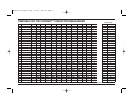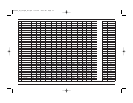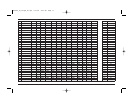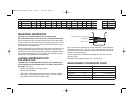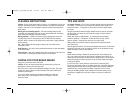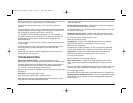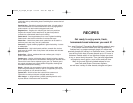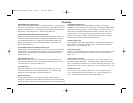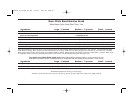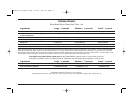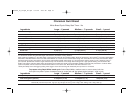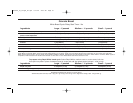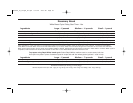
(2 –5 ml) per 3 cups (750 ml) flour. It is a necessary ingredient for making
bagel dough
Nuts, Seeds, Raisins – Add flavour, nutrition and texture to breads. May be
added to just about any bread recipe where flavours are appropriate.
Powdered Buttermilk – A shelf-stable essence of buttermilk without the milk
solids. Acts as a preservative and retards the growth of bacteria and mold.
Salt – Salt is a necessary part of a yeast bread recipe – it not only adds or
enhances flavour, but it controls the yeast and aids in the rising of the dough.
Table salt, sea salt or kosher salt can be used. Sea salt and kosher salt
are more flavourful, and if a recipe specifies their use, we suggest using the
recommended salt.
Self-Rising Flour – This flour would not be used in a bread machine.
Self-rising flour is an all-purpose flour to which leavener (baking powder) and
salt have been added. In traditional baking it is most often used for biscuits,
scones, shortcakes, pancakes or waffles.
Sweeteners – Granulated sugar, brown sugar, honey, molasses, maple
syrup, non-diastatic malt syrup and golden syrup stimulate yeast growth and
development.
Vital Gluten Flour – A very high-protein flour made from hard wheat and
treated to remove most of the starch. For regular yeast bread baking, vital
gluten flour is used primarily as an additive to enhance doughs made with low
glutens such as rye flour. When making rapid rise breads, add vital gluten
flour for a better rise in the shorter rising time. Vital gluten flour is a necessity
for the Last-Minute Loaves.
Whole Wheat Flour – Contains the wheat germ of the flour, giving it a higher
fiber, nutritional, and fat content. Once thought of as “health food” breads that
were heavy and dense, breads made with all or part whole wheat flour are the
most nutritious and can be light-textured and appealing. Purchase good
quality whole wheat flour, and store in refrigerator or freezer to prevent from
turning rancid. Bring to room temperature before using for bread machine
recipes unless using Delay Feature.
Yeast – For most bread machine recipes, we recommend active dry, instant
or bread machine yeast. The “Instant” type yeast is milled slightly finer and
produced at lower temperatures resulting in fewer “dead” cells. It gives very
good results in the bread machine. Rapid rise yeast or quick rise yeast is
specifically for the shorter/rapid/last minute cycles, as it helps to shorten the
rising cycle – adding vital gluten as well will aid in its rise.
GLUTEN-FREE INGREDIENTS
To make gluten-free bread, a variety of flours and ingredients is necessary to
develop a product that resembles wheat bread in taste and texture for slicing,
toasting, and making sandwiches. All of the following ingredients can be
found at your local health food store or in a natural foods grocery store.
They are also easily found and ordered on-line. There are also
several commercial brands of gluten-free bread mixes which can be
used successfully.
Brown rice flour – milled from the whole rice kernel, brown rice flour is high
in fiber, vitamins and minerals. It is very versatile.
White rice flour – milled from polished white rice, white rice flour is also
considered a very versatile flour in gluten-free baking because it has a rather
mild, undetectable flavour. It also blends well with other flours.
Garbanzo bean flour – milled from garbanzo beans and high in protein,
garbanzo bean flour imparts a rich and sweet flavour in baked goods when
combined with other flours.
Garfava flour – milled from both garbanzo and fava beans and high in
protein, garfava flour adds the needed protein to gluten-free breads.
However, it does have a strong, distinct flavour, so must be combined with
other flours in recipes.
Soy flour – milled from roasted soybeans and high in quality protein,
soy flour has a characteristic nutty flavour. It is recommended to combine
soy flour with other flours when baking.
Buckwheat flour – Buckwheat is not actually wheat at all. Buckwheat flour
does have a high protein content and a nutty, assertive flavour. It should
definitely be combined with other flours for baking.
Rye flour – Rye flour has a lower gluten (protein) content than its white
and wheat counterparts. This means one must use white or wheat flours in
18
cbk200c_ib_recipe_en.qxd 5/19/05 9:05 AM Page 19



